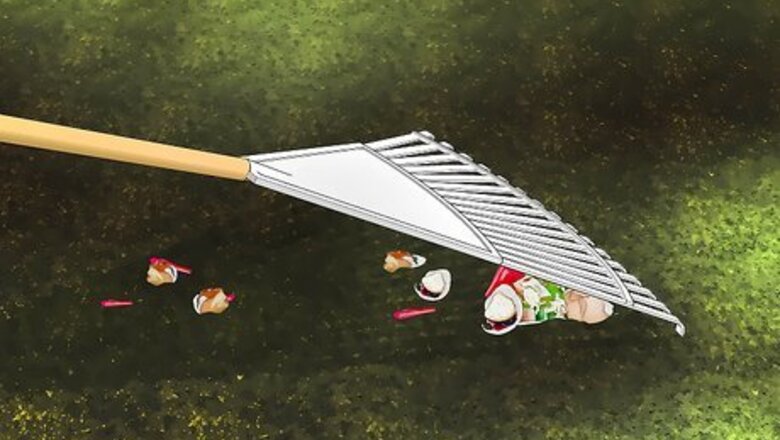
views
X
Research source
Pigeon droppings can also be hazardous and quite a nuisance to clean up. This article addresses how to keep pigeons away from your property, trap them, and dispose of them.
Keeping Pigeons Away Humanely
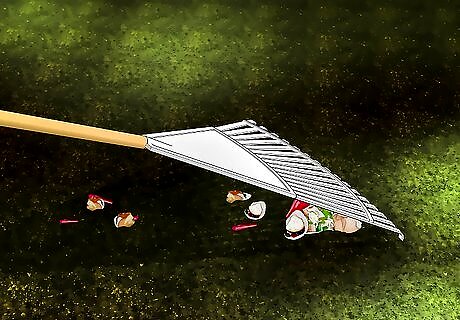
Keep your property clean. Pigeons are natural scavengers who thrive off the waste that humans leave behind. If you maintain a clean property, free of food scraps and loose fruit and vegetation, you are decreasing the chance that pigeons will roost by your home or apartment building. While this may not prevent the pigeons from occasionally traveling through, they probably won't be sticking around long. Make sure you have trash cans and/or dumpsters that can close. This will keep pigeons and other pests away.
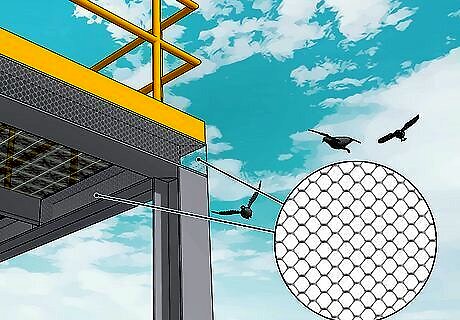
Kick them out of their roosting sites. Place fence or netting around the areas where pigeons roost. Placing these types or netting and wire around the ledges and perches of your property will effectively encourage pigeons to set up shop elsewhere. Before they set up residence, you can cover ledges and other roosting spots with sheet metal. Set this at an angle as it will be difficult for pigeons to roost on a slope. You can also prevent pigeons from roosting with bird netting. This will keep pigeons at bay without harming them. Place bird netting around trees and barn rafters.

Buy "bird strips" for your house. These are rows of small spikes that prevent pigeons from congregating and roosting. These strips of spikes. are placed around the perimeter of large buildings. They are spaced out specifically to prevent pigeons from resting and roosting on roofs and fences. These are relatively inexpensive and humane.
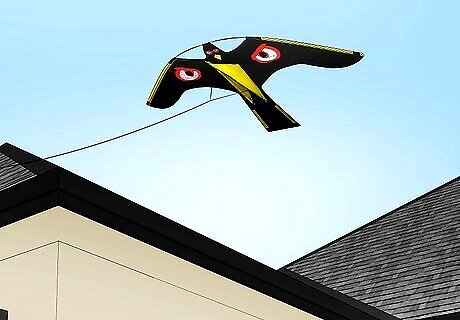
Use a "scare pigeon". These are essentially the equivalent of scarecrows, but designed for pigeons. These come in many different forms, from fake owls to flying model hawks. Pigeons may get used to a model owl sitting in one place for a long period of time. The most effective kind are model hawks attached to a kite with streamers. These will move in the wind and trick pigeons into thinking a predator is near.
Trapping Pigeons
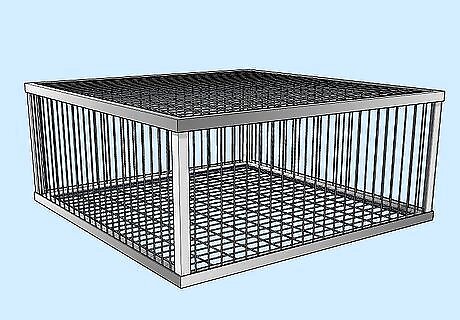
Obtain a pigeon trap. These are typically in the form of large cages with a single door. There are some more elaborate types of traps but simple ones are relatively inexpensive. You can usually trap multiple pigeons in a single trap.

Place some bait. Do this in an area where you plan to place your pigeon trap. Let the pigeons feed off it for a few days. The pigeons will become used to feeding there and will continue to return to the area. Once the pigeons return continually for a few days you can place a trap.
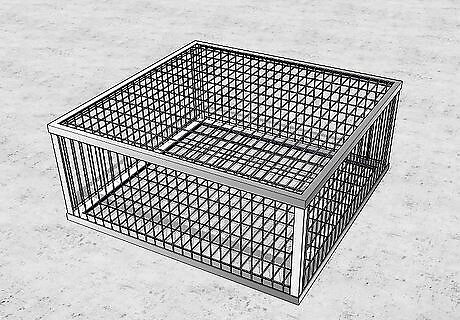
Place your trap. Do this where you've been placing bait or where they roost. Leave the door open at first. Don't set the trap. You will want the pigeons to get used to the trap's presence in their feeding or roosting area. Place some bait inside the trap in the meantime to get the pigeons used to going inside of it. Cracked corn works best.
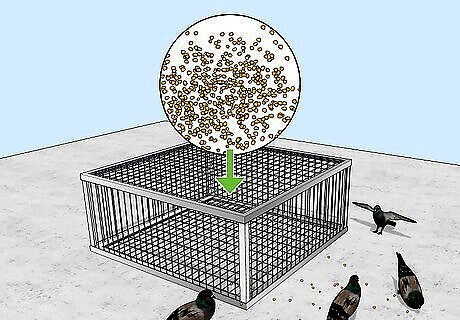
Set your trap. Do this once a large hoard of pigeons has assembled. You will want to trap as many as possible at once. Make sure to put in fresh bait regularly. Make sure the trap is secure where you've placed it.
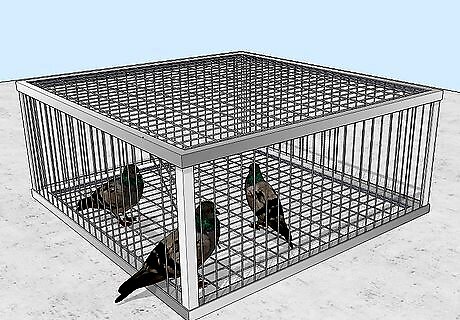
Keep some pigeons in the trap. Once you've trapped them, the presence of the birds will lure other pigeons to the area. It will be easier to trap more pigeons if they keep coming to the area. Remember to continually refresh the bait in your trap. Be careful when dealing with live birds or going near their roosting area.
Disposing of Pigeons

Drive a long distance and set the birds free. You won't want to let them go on your own property or they will just roost again in the same spot. This will only really work well if the pigeons have only recently roosted on your property. Pigeons that have been in a place for a long time will find their way back, even from a distance. Contrary to opinion, pigeons are very intelligent and can find their way back to a roost from very far distances. The best combination of methods is to use preventatives like netting and bird strips as well as traps to get rid of a pigeon problem.
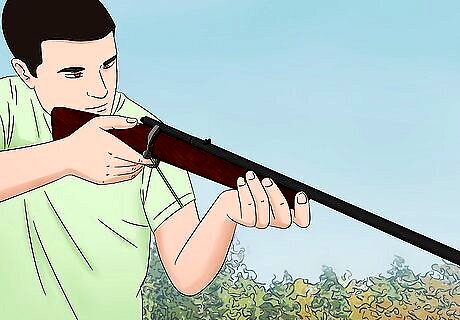
Kill the birds using a gun. Killing the pigeons should only be a last resort when all humane methods have failed. You don't want to unnecessarily harm an animal.Warning! It is illegal in many places to harm or kill wildlife, so only use a gun when you are sure; however, it’s more likely there are less rules when in rural areas. While pigeons are not always a standard in rural areas, they are not wholly uncommon. If you have annoying pigeons on your large property, it will be easy to shoot and kill pigeons with a low caliber gun like a .22 caliber rifle. Because pigeons have, over time, developed a tolerance for humans and are rarely scared in their presence, it should not be very difficult to get a good shot.
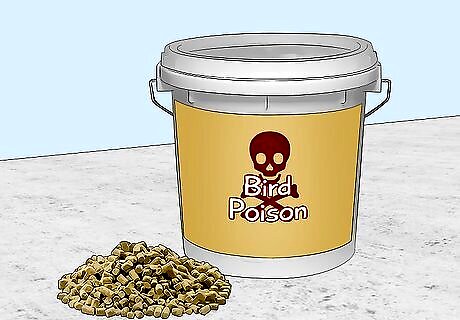
Use bird-controlling poison. Again, this should only be done as a last resort as it is inhumane. Bird poison can hurt other animals, so be careful if you or your neighbors have pets. Be aware of other non-threatening wildlife in your area as well. By baiting and poisoning pigeons, you can easily eliminate them. How to dispose of a large number of dead pigeons is a big concern and poison is inhumane, so only poison pigeons as a last resort. Try all preventative and humane methods before resorting to this.



















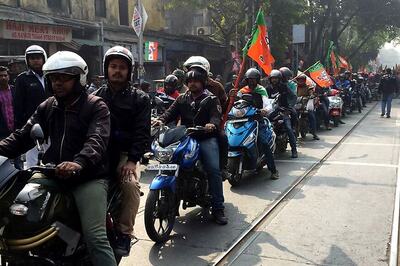
Comments
0 comment